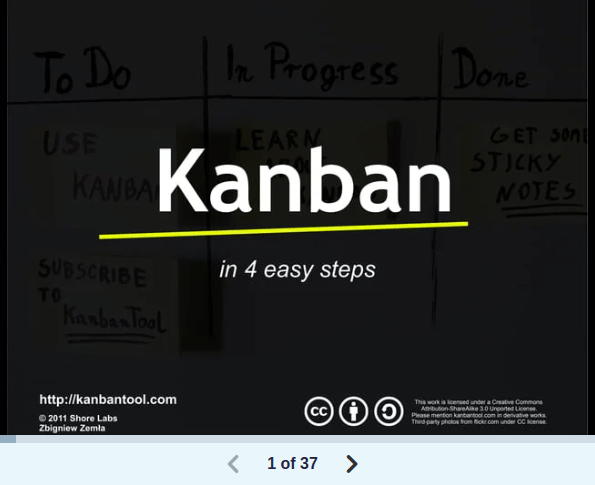by Karl Scotland
Karl Scotland explains the concept of a Kanban system for software development. He identifies the important aspects from which Kanban systems can be viewed in order to understand and improve an overall organization’s delivery capability: workflow, visualization, work in process limit, cadence and continuous improvement. This article provides deep insight into those areas and their implications on a system.
by Matthew Moran
Hiring the best talent is crucial to your business success. But if your team is too small to have a dedicated HR department, you need to involve your current staff to do it. Keeping track of all candidates, collecting and organizing documents, interviewing, employment testing, background and reference checks can be organized in a visual way to give you better insight in a whole process.
If you want to significantly improve your recruitment process and make it much less painful for team members involved in it – why not try Kanban to aid you in it?
by Henrik Kniberg
For those who want to get going with Kanban immediately, Henrik Kniberg had prepared a Kanban kick-start example. It’s a teamwork board with visual hints on how to do things. This shall help you to find out how to use Kanban, what a typical Kanban pattern looks like and how to fill in a Kanban card.
by Karl Scotland
This is Karl Scotland’s take on Kanban, written at the beginning of the great Kanban for software development adaptation wave. It encompasses the general idea of Kanban, the concept of Flow and explains how to understand Cadence in Kanban systems.
In his article, Karl refers to Kanban as a means of controlling the workflow. Originally introduced for controlling the stock in automobile production industry (Toyota), it has been designed to allow for a just-in-time production in an automated way, but not void of the all important human touch.
What does this imply? At first glance, Kanban for software development looks just like a typical Agile workload board. The process is divided into stages, and tasks are transferred from one to another as the process goes on. As the tasks are moved, they are placed at the bottom of a stage column, and are meant to be pulled from the top. This way the order of things is kept with respect of the healthy FIFO rule.
by Jim Benson
Getting started with Personal Kanban?
Jim Benson, perceived as the father of Personal Kanban, has written a blog post about creating your first Kanban board for personal purposes. Read on, to learn how to set up a Personal Kanban board tailored to your particular needs in just 3 simple steps.
by Mitch Pronschinske
David Anderson was the first person to implement Kanban methodology in software development, which kick-started the use of Kanban in any project management today.
After David’s experiments with it at Corbis and Microsoft IT Dep. (2004), he began publishing the results and spreading the word about the effects of applying this methodology to software development. Throughout 2008 he attended many events, during which he talked about Kanban with the result of people going back to their offices and trying it out. This is when Kanban movement began gathering a real growth momentum. The number of people speaking about Kanban was vast and has been growing ever since.
Thinking of Kanban as a lean approach to software development made the author of this article think that Kanban in fact means a number of things.
From the original, Japanese word for a signal card, via the – almost 50 years old - signalling system of lean production to the most recent one – a Kanban system for software development. Find out what Kanban’s universal values are.
by Jim Benson
Kanban is a great method of organizing, improving and finishing work. It has been first developed at Toyota, to manage the stock and production of car parts. The aim of Kanban is to create a complete workflow transparency, so that everyone in an organization – from production line worker to the CEO – gain a better understanding of the process they’re involved in. This way each employee could see and improve the way his effort influences the entire process.
